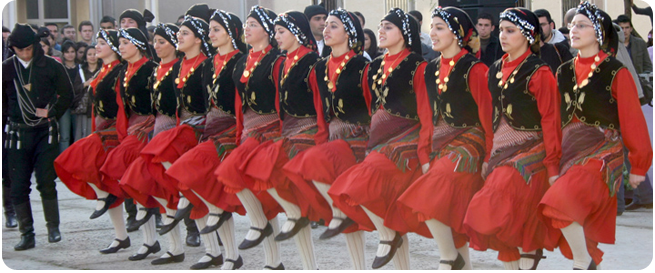Culture
Settlement in the area is in a scattered system. As the area is montainous, citizens used the lowland of a few decares they own as fields and built houses in the upper parts. Thus, the long distances between houses and districts have weakened the relations people have among each other. Therefore, differences have arised between the dialects of counties.
The structure of Giresun is one that generally protects the older traditions. This structure brought about a sense of locality in the local people. Here one encounters the real character of the locals.
More than half of the people living in Giresun have connections with the countryside, i.e. an image of half townee half villager is predominant.

TRADITIONS AND CUSTOMS
The locals have abandaned the old traditions even if just a pinch since they began migration to the cities. However, the majority is loyal to the traditions. These traditions and customs are largelly based on old rumours.
The new year is celebrated on March 14 annually. That morning, people wake up early, collecting water from the sea or river come home and enter the house passing the threshold with the right foot. Water is sprinkled all around the house. If there are animals, water is scattered on them too.
No visitors are allowed that they, as it would mean ill omen, however if there is an individual whose foot has not yet been tried, he/she is invited home. Steping in the right foot he/she says, “Happy new year, I quash your march”. That night nettle or trotter is cooked and green bead is put in. The person, to whose mouth the bead comes while eating these, starts harvest that year, Among his/her family, he/she is considered to have a high livelihood.
On March 14 the Day is celebrated. march 14, March 15, April 16, May etc. are called as months. On those days, opinions are expressed on how the weather will be through that month.
Hidrellez (old-Turkish celebration of spring) is celebrated on May 6. It is believed that Hızır and İlyas Aleyhissam (immortal reverend people believed to come in time of need) meet that day and the winter is over, good days are to come.
Again, in the evening 3-5 girls bury their rings under the foot of a rose tree making wishes. In the morning they pull them out chanting mani (Turkish poem). They try their chance according to the mani chanted.
GİRESUN FOLKLORE
The folk dances of the Black Sea Region generally resemble each other each other except for some nuances. The local community is vibrant and effervescent just like the sea on the coast of which they live. Their dances and folk songs are ideal to their characteristics. The most important ones among Giresun dances are Giresun Karşılaması and horon. Men dance horon accompanied with kemancha, the famous instrument of the region, or a flourish of trumpets. Women, on the other hand, dance accompanied with tambourine with jingles, clarion, lute and saz. Horon has variants that change according to the rhythm of music. Giresun is also a rich city in means of Giresun folk songs which are many and famous throughout the country.
APPAREL
Whereas modern apparel is worn in the city center and coastal regions, traditional apparel is common in the inner parts. Breechclout is a fixed element of the women apparel in Giresun. There are variants of the breechclout which is used as a cover for the head, or belt. Women cover the head with an elaborate cloth which is called “Keşan Peştamal”, and use as belt a cloth which is called rectilinear or pillared breechclout. Women used to wear canfes (three skirts) earlier. Women wore golden hoods on their heads, beşibiryerde (five pieces of gold) on their belts and hasır (golden) bracelets on their arms in house visits and in special days like weddings and holidays. Hasır bracelets draw great attention even today. Wool socks woven in older times are not common today. Coloured yashmacs, breechclouts, dresses, cardigans and vests form the everyday apparel of women. Black rubber worn on the feet is no longer used. Modern apparel is also common in the city besides this. In mountainous regions, men wear skinny leg trousers called “Aba Zıpka”, the part above the calf of which is loose. The harsh climate of the region is effective on this apparel. Besides aba zıpka men wear çerkes belts, daggers (on the waist), silver sheaths (on the neck), kabalaks (on the head) and boots. Men wear jackets, trousers and caps in the city center, coast and towns.
HANDICRAFTS
Resting on a quite old history, Giresun coppersmith is a significant handicraft that carries its existence even today. Besides wrought copper, copper hand-workmanship is also conducted. Generally, ornaments like tea-urns, trays, baubles, wall plates, sugar-bowls and vases are crafted.
Hand carpentry and embroidery are also among important handicrafts in Giresun.

